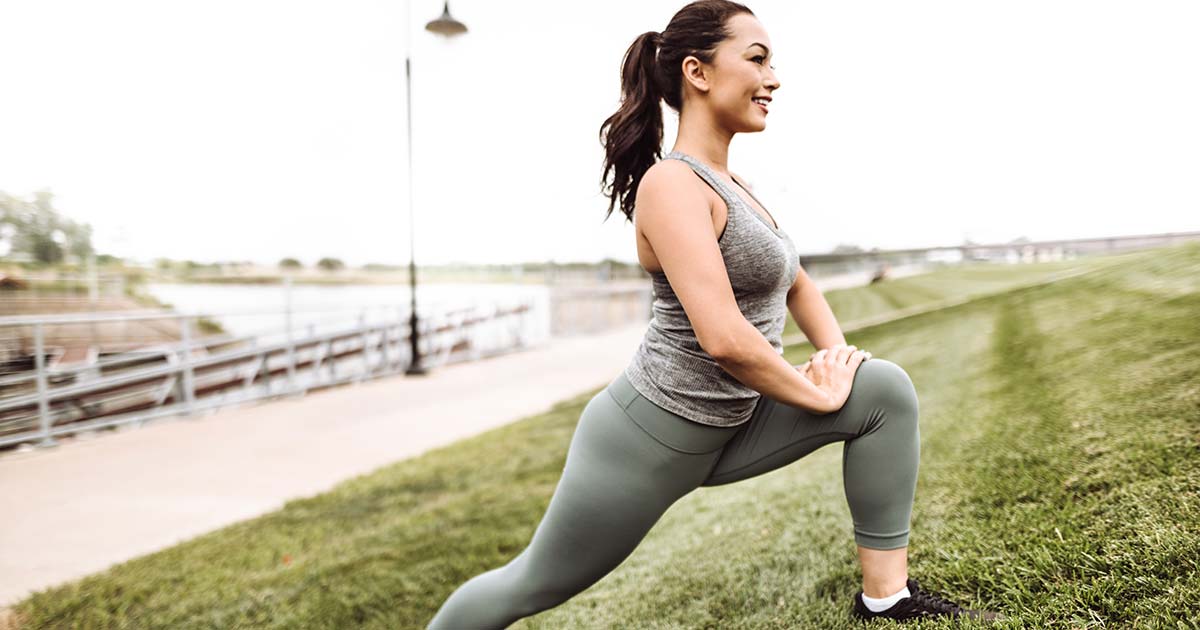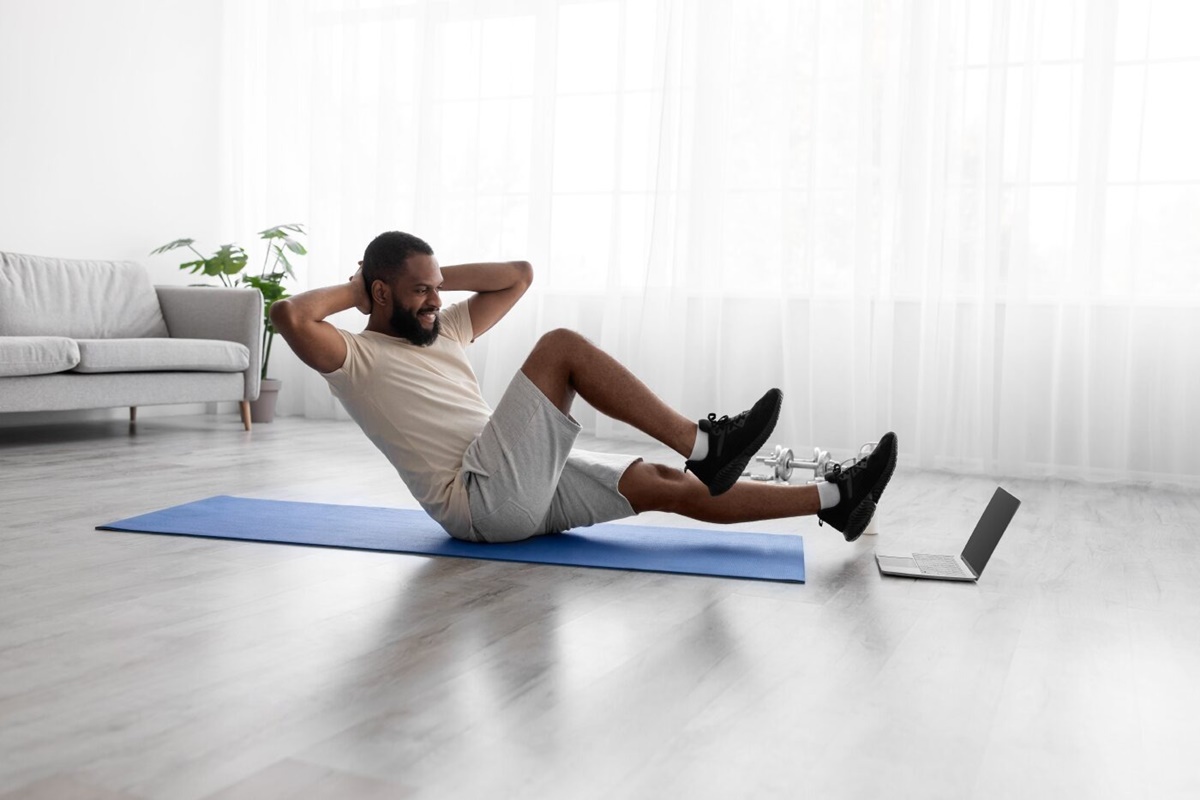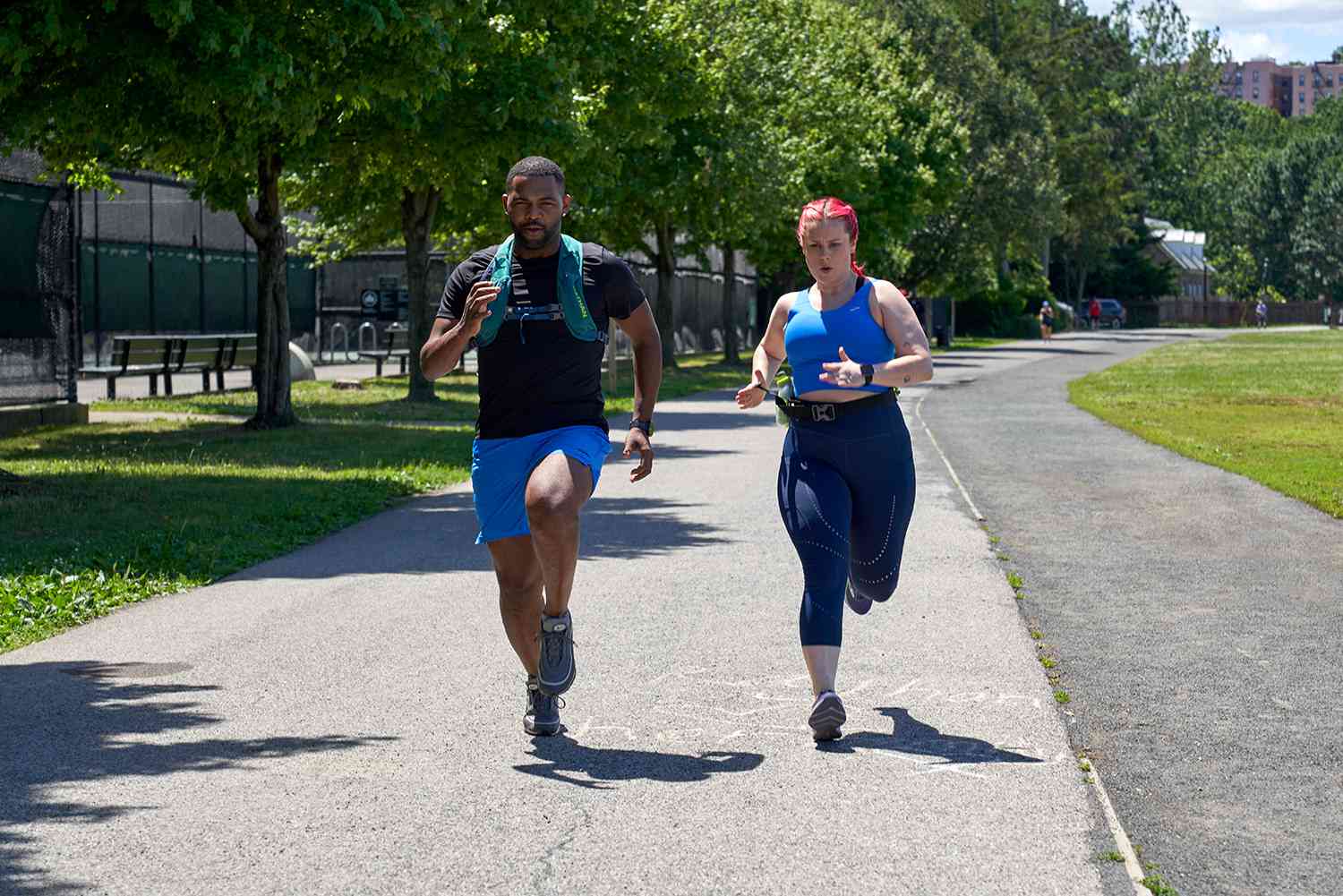Home>Misc>Featured>When Is The Best Time To Stretch During An Exercise Routine?


Featured
When Is The Best Time To Stretch During An Exercise Routine?
Published: October 3, 2023
Discover the optimal time to integrate stretching into your exercise routine. Our featured guide reveals the best moments for stretching during workouts and their benefits.
Introduction
When it comes to exercise, most people think about activities like cardio, strength training, or high-intensity interval training (HIIT). While these are undoubtedly important for maintaining fitness, one aspect that is often overlooked is stretching. Incorporating stretching into your exercise routine can provide numerous benefits for your body and overall well-being.
Stretching not only helps improve flexibility and range of motion, but it also reduces muscle tension, enhances blood circulation, and promotes better posture. Moreover, incorporating stretches into your exercise routine can help prevent injuries and improve athletic performance. However, knowing when to stretch is just as important as the actual act of stretching itself.
In this article, we will explore the best times to stretch during an exercise routine. Whether you’re a seasoned athlete or just starting your fitness journey, understanding when to incorporate stretching can have a significant impact on the effectiveness and safety of your workouts. So let’s dive into the details of when and how to optimize your stretching routine for maximum benefits.
Benefits of Stretching During an Exercise Routine
Stretching during an exercise routine offers a multitude of benefits that can enhance your overall fitness experience. Here are some key benefits to consider:
- Improved Flexibility: Regular stretching can increase your flexibility by lengthening and loosening your muscles. This increased flexibility allows for a greater range of motion in your joints, enabling you to perform exercises and movements more effectively.
- Reduced Muscle Tension: Stretching helps to alleviate muscle tension and tightness that can develop from intense workouts. By stretching, you can release muscular tension and reduce the risk of muscle strains or pulls during exercise.
- Enhanced Blood Circulation: Stretching increases blood flow to your muscles, promoting better circulation and delivering essential nutrients and oxygen. This enhanced blood flow can improve muscle performance and aid in recovery after workouts.
- Improved Posture: Regular stretching can help correct and improve your posture. It stretches the muscles that may become tight and shortened due to prolonged sitting or poor postural habits, helping you maintain a more upright and aligned position.
- Injury Prevention: Incorporating stretching into your exercise routine can significantly reduce the risk of injuries. It prepares your muscles and joints for the demands of exercise, increases your body’s resilience, and improves overall muscle balance and coordination.
- Enhanced Athletic Performance: Stretching not only improves flexibility but also boosts your athletic performance. It allows you to perform movements with more power, agility, and efficiency, leading to better sports performance and overall fitness gains.
Incorporating stretching into your exercise routine can have a profound impact on your overall fitness journey. Whether you’re a beginner or an experienced athlete, reaping the benefits of stretching is essential for reaching your fitness goals while maintaining a healthy and injury-free body.
Factors to Consider Before Stretching
Before diving into your stretching routine, there are several factors you should consider to ensure that you get the most out of your stretches. Here are some important factors to keep in mind:
- Warm-up: It’s crucial to warm up your body before starting any stretching routine. Engaging in light cardio activities like jogging or jumping jacks for 5-10 minutes can increase your body temperature and blood flow, preparing your muscles for stretching.
- Individual Needs: Everyone’s body is different, and individual needs may vary. Consider your fitness level, any existing injuries or conditions, and your overall flexibility when determining the types and intensity of stretches to include in your routine.
- Proper Technique: Performing stretches with proper technique is crucial to prevent injury and maximize the benefits. Ensure that you understand the correct form and alignment for each stretch and listen to your body’s limitations. Avoid pushing beyond your comfort zone or forcing a stretch.
- Timing: Timing your stretches correctly is essential. Avoid stretching cold muscles, as it can lead to strains or pulls. On the other hand, stretching immediately before certain activities, such as heavy weightlifting or explosive movements, may decrease performance. Find the right balance and adjust your stretching routine accordingly.
- Consistency: Consistency is key when it comes to stretching. Incorporating stretching into your exercise routine on a regular basis can yield long-term benefits. Aim for at least two to three days per week of dedicated stretching sessions to maintain flexibility and improve your range of motion.
By considering these factors, you can ensure that your stretching routine is safe, effective, and tailored to your individual needs. Remember, it’s always important to listen to your body and make adjustments as necessary to avoid overstretching or causing harm.
Best Time to Stretch Before an Exercise Routine
Stretching before exercise can help prepare your body for the upcoming physical activity. The optimal time to stretch before your workout depends on the type of exercise and your individual preferences. Here are a few guidelines to consider:
- Dynamic Stretching: For activities that require explosive movements, such as sprinting or jumping, dynamic stretching is ideal before your workout. Dynamic stretches involve active movements that mimic the movements you’ll be doing during your workout. They help increase your body temperature, activate the muscles, and prepare them for the upcoming activity.
- Static Stretching: Static stretching involves holding a stretch for a period of time without any movement. It’s recommended to perform static stretches after your workout as part of your cool-down routine. However, if you prefer to include static stretches before your workout, make sure to do them after your dynamic warm-up. This helps prevent a decrease in muscle performance and reduces the risk of injury during the workout.
- Individual Preferences: Consider your personal preferences and how your body responds to stretching before exercise. Some individuals may find that a light, full-body stretching routine before their workout helps them mentally prepare and improve their focus. Others may prefer to focus mainly on dynamic movements and save static stretching for after their workout.
Ultimately, the best time to stretch before an exercise routine depends on your exercise goals, the type of activity, and what feels right for your body. It’s important to listen to your body, warm up adequately, and choose stretches that target the specific muscles or areas you’ll be engaging during your workout.
Best Time to Stretch During an Exercise Routine
Stretching during an exercise routine can provide additional benefits and improve your overall performance. Here are some considerations on when to incorporate stretching during your workout:
- Between Sets: If you’re engaging in strength training or resistance exercises, you can incorporate stretching between sets. Taking short breaks to stretch the muscle group you just worked can help increase blood flow, reduce muscle tightness, and improve your range of motion for the next set.
- Active Recovery: During longer workout sessions, such as circuit training or interval workouts, you can incorporate stretching as part of your active recovery periods. After completing a high-intensity exercise, take a few moments to stretch the muscles you just worked to prevent them from tightening up and to aid in their recovery.
- Complex Movements: If you’re performing complex movements that require coordination and balance, incorporating stretching as a transitional movement can be beneficial. For example, in a yoga or Pilates class, stretching movements seamlessly flow into the next exercise, promoting fluidity and enhancing the mind-body connection.
- Mid-Workout Breaks: If your workout session is long or intense, you can take short breaks to incorporate stretches to prevent muscle fatigue and maintain optimal performance. Stretching specific muscle groups during these breaks can provide relief, increase circulation, and help prevent overuse injuries.
The best time to stretch during an exercise routine varies depending on the type of workout and individual preferences. Experiment with different methods and find what works best for you and your body. Remember to stay hydrated, listen to your body, and avoid overstretching or pushing yourself beyond your limits during your workout.
Effects of Stretching After an Exercise Routine
Stretching after an exercise routine is an essential part of the cool-down process. It allows your body to transition from the intensity of the workout back to a resting state. Here are some effects and benefits of stretching after your workout:
- Improved Flexibility: Stretching after exercise helps maintain and enhance your flexibility. The muscles are warm and more pliable, making it easier to stretch and increase your range of motion. This can contribute to better overall flexibility in the long run.
- Muscle Recovery: Stretching after exercise aids in muscle recovery and can reduce post-workout soreness. It helps to decrease muscle tension, remove waste products such as lactic acid, and increase blood flow to promote the delivery of oxygen and nutrients to the muscles.
- Reduced Risk of Injury: Engaging in stretches after a workout can reduce the risk of injury by helping to restore muscle balance and prevent imbalances or tightness that may have developed during the exercise. Stretching can also alleviate muscle tightness, preventing potential strains or pulls.
- Relaxation and Stress Reduction: Stretching after exercise can help induce a sense of relaxation and reduce stress levels. Slow, controlled stretches can activate the parasympathetic nervous system, promoting a state of calmness and aiding in recovery both physically and mentally.
- Cool-Down: Stretching is a crucial component of the cool-down process. It gradually decreases heart rate and body temperature, helping your body return to its pre-exercise state in a controlled manner. This can reduce the likelihood of dizziness and fainting while promoting a smooth recovery process.
It’s important to note that when stretching after exercise, aim for static stretches rather than dynamic stretches. Static stretches involve holding a stretch for an extended period, allowing the muscles to relax and lengthen gradually. This is the ideal time to focus on deepening the stretches and improving flexibility.
Incorporating a post-workout stretching routine can enhance your overall fitness experience, promote muscle recovery, and contribute to injury prevention. Not only will it leave you feeling physically relaxed, but it can also provide mental and emotional relaxation after exertion.
Conclusion
Stretching is an often overlooked but crucial component of any exercise routine. By incorporating stretching into your workout regimen, you can unlock a host of benefits for your body and overall well-being. Whether you stretch before, during, or after exercise, each timing has its own advantages and considerations.
Stretching before an exercise routine can help warm up your muscles, improve flexibility, and reduce the risk of injuries. Dynamic stretches are particularly effective for preparing your body for activities that require explosiveness and agility. On the other hand, static stretching is best reserved for after your workout, as it helps cool down your muscles, improve flexibility, and aid in muscle recovery.
Stretching during an exercise routine can provide additional benefits, especially during longer or more intense workouts. Taking short breaks between sets or incorporating stretching as part of your active recovery can help maintain flexibility, prevent muscle fatigue, and optimize performance.
After your exercise routine, stretching can aid in muscle recovery, reduce post-workout soreness, and promote relaxation. Static stretches during the cool-down phase help bring your body back to its resting state, regulate heart rate, and facilitate the removal of waste products.
Remember that individual preferences and goals should also be considered when determining the best time to stretch during your exercise routine. Listening to your body, warming up adequately, and maintaining proper technique are key to reaping the maximum benefits of stretching.
Incorporate stretching into your exercise routine regularly, allowing yourself to reap the incredible rewards it offers. Whether you’re an athlete or just starting your fitness journey, embracing the right timing and techniques for stretching will play a crucial role in your overall health, performance, and longevity in physical activities.









